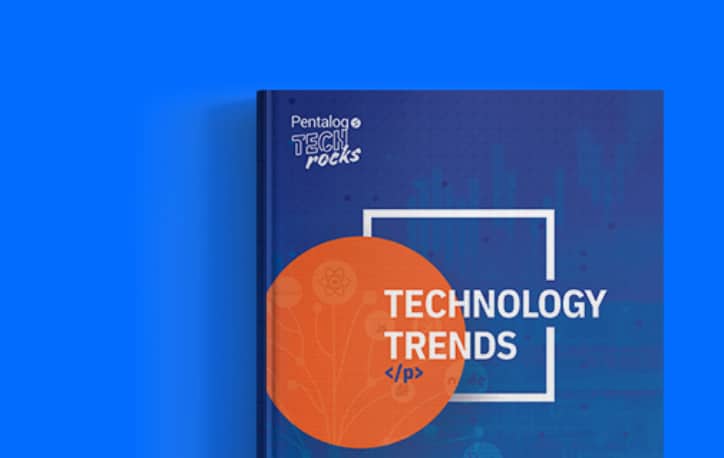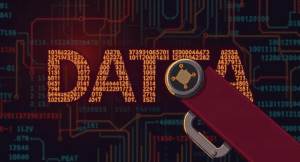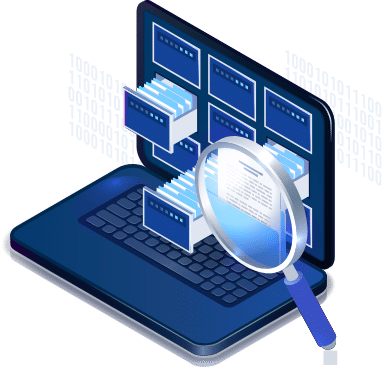AI can now write essays, generate images, answer questions, and even make predictions. But can it fix your dirty data?
Every business leader knows that bad data means bad decisions – and bad decisions cost money. From eliminating duplicate records that throw off customer data insights to fixing data accuracy issues that lead to compliance risks, organizations have spent years trying to clean up the mess in their databases. And now AI promises to do it all for them.
Automated data cleansing, intelligent matching, and self-healing data pipelines sound incredible. But is AI really the ultimate solution for your data issues, or just another tech trend with its own set of limitations? Let’s find out!
AI’s Expanding Role in Data Quality
For years, data quality management has been a labor-intensive process. But AI is changing that.
Instead of relying solely on predefined rules, AI-driven systems can analyze vast datasets, detect patterns, and automate many aspects of data quality management to obtain accurate data. Some of its key applications include:
1. Automated Data Cleansing
One of the biggest promises of AI data quality management is automation. Traditional data cleansing methods require extensive manual effort to identify and correct data errors, but AI streamlines (simplify and speed up) the process and by:
- Detecting and correcting inconsistencies in large datasets without human intervention.
- Identifying duplicate records through advanced pattern recognition.
- Filling in missing values using predictive models that infer data based on context.
2. AI-Powered Anomaly Detection
It’s not uncommon for data inconsistencies and errors (especially the minor ones) to go unnoticed until they cause major problems. AI is changing this by:
- Spotting irregularities in real-time to flag potential errors before they escalate.
- Distinguishing meaningful outliers from random noise to reduce false alarms.
- Enhancing fraud detection by identifying suspicious patterns in financial or transactional data.
3. Pattern Recognition for Smarter Data Matching
AI doesn’t just clean data – it can also match and link records across different sources with greater precision. Natural language processing (NLP) techniques, combined with machine learning models can analyze vast amounts of data to:
- Detect relationships between disparate datasets that traditional matching techniques might miss.
- Refine entity resolution by understanding contextual similarities beyond exact matches.
- Accelerate data integration across platforms, which makes data more usable and consistent.
What’s Driving AI Adoption in Data Quality Management?
The growing reliance on AI in data quality management is being driven by real business needs. Here are some key factors fueling its rapid adoption:
- The Explosion of Big Data: Businesses are dealing with more data than ever before. AI provides the scalability needed to manage and clean massive datasets efficiently and maintain high-quality data.
- Advancements in Machine Learning: AI models are becoming more efficient and accurate at processing unstructured and complex data.
- Cloud-Based AI Tools: Modern AI-driven data quality solutions are easily integrated into cloud environments, allowing businesses to process and refine data in real time.
These advancements have positioned AI as a game-changer in data quality management. But does this mean traditional data matching and quality control methods are becoming obsolete? Not quite.
Will AI Replace Traditional Data Quality Improvement Methods?
With the speed AI is being adopted in the data space, it’s only normal for people to wonder if it’s going to replace traditional data-matching and quality control methods altogether. But the answer to this isn’t a simple yes or no; it’s more complex.
While AI offers several advantages, traditional rule-based data techniques aren’t completely irrelevant.
Why Traditional Data Quality Methods Still Matter?
AI is shaking up data quality management by speeding up (automating) processes that once took weeks. It can process vast amount of data in seconds. But when it comes to precision, trust, and control, AI still falls short. And that’s exactly why traditional data quality methods remain indispensable to enterprise data management.
1. Some Data Quality Challenges Still Require Rules
AI excels at detecting patterns and anomalies, but it doesn’t inherently “understand” data the way businesses do. Many critical data quality tasks still require pre-defined rules, such as:
- Standardization & Formatting: AI can detect inconsistencies, but pre-defined rules ensure consistency in your datasets, such as by enforcing date formats, address structures, or naming conventions.
- Duplicate Detection & Entity Resolution: While AI-powered data matching is improving, traditional techniques like deterministic and fuzzy matching remain the gold standard for eliminating duplicate records with precision.
- Handling Business-Specific Logic: AI lacks deep contextual knowledge of industry-and company-specific rules, which human-defined logic enforces.
2. Accuracy and Explainability Still Matter – Especially in High-Stakes Industries
Many industries, such as finance, healthcare, and government, have high data quality standards and rules that demand full transparency in data processing. AI’s “black box” decision-making can pose risks in these sectors because:
- Regulatory Compliance Demands Transparency: Companies must justify data modifications and provide audit trails – something AI’s probabilistic models struggle to deliver.
- AI Can Make Mistakes: AI might incorrectly merge distinct records (false positives) or miss true duplicates (false negatives). This can corrupt databases and lead to severe consequences such as financial misreporting, patient misidentifications, or regulatory penalties.
- Errors Can Go Unnoticed: Without structured, rule-based validation, flawed AI corrections can slip through unnoticed and cause (hidden) damage to data integrity.
3. Traditional Matching & Data Governance Remain Essential
High-stakes industries demand complete control over how data is matched, which AI alone can’t guarantee. This is why, even as AI enhances data matching, traditional techniques like deterministic, fuzzy, and phonetic matching remain the foundation of data quality governance across industries. These methods offer:
- High-Matching Accuracy: AI relies on probability, while traditional data matching methods ensure precision.
- Auditability & Compliance: Businesses need a clear, traceable process to justify how records where matched or deduplicated.
- Control Over Decision-Making: With traditional data quality management, organizations retain authority over final data decisions. They ensure humans – not AI- make the final call on critical decisions.
AI is powerful, but when accuracy, compliance, and trust are at stake, businesses still largely rely on the proven strength of traditional data quality methods.
The Limitations of AI in Data Quality Management: What It Can’t Fix (Yet)
AI can clean, match, and analyze data at a scale no human team could ever match. But, as discussed earlier, AI alone is not a cure for poor data quality.
Many businesses assume AI will “fix” all their data issues, but this isn’t the case in reality. For all its speed and intelligence, AI has blind spots.
Here’s where AI still falls short – and why human oversight remain critical:
1. AI Can’t Fix the ‘Garbage In, Garbage Out’ Problem
AI is only as good as the data it’s trained on. If your datasets are incomplete, inconsistent, or riddled with errors, AI will learn from that flawed data and amplify those mistakes.
AI can detect anomalies and suggest fixes, but it can’t inherently understand business context to know what’s truly correct. For example, if a financial dataset has incorrect transaction codes, AI might flag the discrepancies, but without business rules in place, it won’t know where to correct, remove, or retain them.
2. Data Silos Still Get in the Way
AI thrives on interconnected data, but most organizations still struggle with fragmented, siloed datasets spread across different systems. While AI can match records and detect overlaps, it can’t automatically resolve inconsistencies between conflicting data sources.
Let’s say a customer’s address exists as “123 Main St.” in one database and “123 Main Street, Apt 4B” in another. AI might recognize a similarity between these two records, but it alone cannot make the call if these records should be merged or treated as separate. You need well-defined data governance rules for that.
3. AI Struggles with Business-Specific Logic
AI can learn patterns from historical data, but it doesn’t grasp the why behind them. That’s why can cause issues with business-specific logic and unique data rules. For example, an AI-driven CRM system might flag a VIP client’s duplicate records and suggest merging them. But acting upon this recommendation could create a major problem for the company if that client intentionally has multiple accounts for different business divisions.
4. The Black Box Problem: AI’s Lack of Explainability
AI-driven decisions aren’t always transparent. Unlike rule-based systems where every data correction is trackable, AI models often function as a black box, meaning they provide results without a clear, auditable explanation. While this isn’t ideal for any business, it particularly poses challenges for those operating in strictly regulated industries that require compliance, reporting, and full data traceability, such as healthcare. A hospital cannot afford to merge two patient records simply because an AI data matching tool deems them similar. It needs verifiable rules to justify the match.
5. False Positives and False Negatives Still Happen
As mentioned earlier, AI data matching is probabilistic, not deterministic. This means, it might:
- Incorrectly merge records that should remain separate (false positives).
- Fail to detect duplicate records of the same entity that should be merged (false negatives).
What’s worse is that without structured, rule-based checks, these errors can go unnoticed, continuing to impact business decisions, reporting accuracy, and regulatory compliance, until they create a big problem.
6. Regulatory Compliance & Risk Considerations Still Require Human Oversight
Data governance, particularly in strictly regulated industries, require auditability, risk mitigation, and compliance with data laws. While AI can help with automating data quality tasks, business still need:
- Traceability – A clear record of why data was modified.
- Control – The ability to override AI decisions when necessary.
- Accountability – Ensuring AI-driven changes don’t introduce legal or operational risks.
This is why human oversight and traditional data quality methods are still required, even as AI automates various tasks.
AI and Traditional Data Quality Methods: A Hybrid Approach for the Future
For years, businesses, data professionals, and technology experts have debated whether AI will replace traditional data quality improvement methods. But the real question isn’t traditional data quality management vs. AI – it’s how to combine them for even better results.
The future of data quality lies in a hybrid approach that combines AI’s speed and automation features with the precision and reliability of rule-based methods. Together, they create a stronger, more reliable data quality framework.
How AI Enhances Traditional Data Quality Methods
As we have established by now, AI isn’t a replacement, it’s a force multiplier for existing data quality techniques. When integrated correctly with them, AI enhances data quality by:
- Automating Data Profiling & Anomaly Detection – AI quickly identifies missing values, duplicates, and inconsistencies that traditional methods might take longer to catch.
- Refining Rule-Based Cleansing & Standardization – AI can assist in suggesting corrections, filling data gaps, and improving format consistency. It can help prepare data for matching before traditional rules kick in.
- Optimizing Matching & Deduplication – AI-powered algorithms help detect hard-to-catch duplicates and analyze patterns to optimize data quality through deterministic and fuzzy matching processes, which reduces the need for manual adjustments.
- Transforming Data Quality Governance & Auditing – AI can help improve data governance processes and ensure compliance by flagging potential errors, duplicates, and inconsistencies that would take humans much longer to find.
What Leading Companies Are Doing Today
Given the importance of data quality, forward-thinking organizations aren’t abandoning traditional data improvement processes – yet. Here’s what they are doing instead:
- Using AI to augment, not replace, traditional data quality checks – AI speeds up tasks, but predefined rules ensure consistency and reliability.
- Adopting a hybrid approach that balances automation with control – AI detects patterns and provides suggestions, but human-defined rules finalize decisions to ensure precision and compliance.
- Prioritizing auditability and explainability – especially in industries like finance and healthcare where businesses need traceable, rule-based decisions.
Best Practices for Combining AI & Traditional Data Quality Techniques
To maximize data quality, businesses should:
- Use rule-based validation for critical data tasks, such as standardization, compliance checks, and deduplication.
- Leverage AI for speed and pattern recognition to improve data preparation processes and anomaly detection.
- Implement human oversight to validate AI-driven corrections and prevent automation errors.
- Continuously test AI models by benchmarking it against traditional data quality techniques to measure performance and maintain accuracy.
Getting AI-Ready: Laying the Groundwork for Smarter Data Quality Framework
AI can be a powerful tool for improving data quality, but only if businesses set the right foundation. To maximize its potential, organizations need to:
- Ensure High-Quality Input Data – AI learns from what it’s given. If the training data is messy, AI will amplify those errors instead of fixing them.
- Define Clear Business Rules – AI can assist with automation, but predefined rules and governance frameworks help maintain accuracy and consistency.
- Maintain Human Oversight – AI should assist—not replace—data quality teams. Manual review is crucial for ensuring trust and compliance.
- Adopt a Hybrid Approach – Combining AI with traditional data quality methods leads to better accuracy, transparency, and control.
By taking these steps, businesses can ensure that AI enhances—not compromises—their data quality strategy.
AI Alone Won’t Fix Your Data – But the Right Strategy Will
AI is transforming data quality management. It offers speed, automation, and efficiency that were once unimaginable. However, it isn’t a magic fix for data quality.
Efficient data quality management isn’t just about speed – it’s also about accuracy, control, and trust. And that’s exactly why traditional data quality methods remain indispensable.
You must use AI to enhance, not replace, established data quality practices. Find the right balance – use automation where it makes sense while maintaining control over critical decision-making.
Contact us today to learn how DataMatch Enterprise can help ensure that your data remains accurate, trustworthy, and AI-ready.











































